Bold, distinctive, and memorable are not words you would associate with most municipal golf courses in America. But thanks to a Troy Miller-led renovation, Charleston Municipal Golf Course embodies all of those qualities.
Tight municipal budgets make it challenging to redesign any government-owned course. And even when the funds are there, local politics and pressures can rob the architectural process of creativity. So Troy Miller, the City of Charleston, and the homegrown “Friends of Muni” organization all deserve a round of applause for not only committing to a wholesale renovation but also allowing it to be daring, different, and rooted in a sense of place and history.
When you think Charleston golf, you think Seth Raynor. His designs at Yeamans Hall Club and Country Club of Charleston are stellar, but they are accessible only to a few. Troy Miller’s vision for “Muni,” as it’s known locally, was to bring Raynor’s template concepts and bold shaping to a course anyone can enjoy.
-
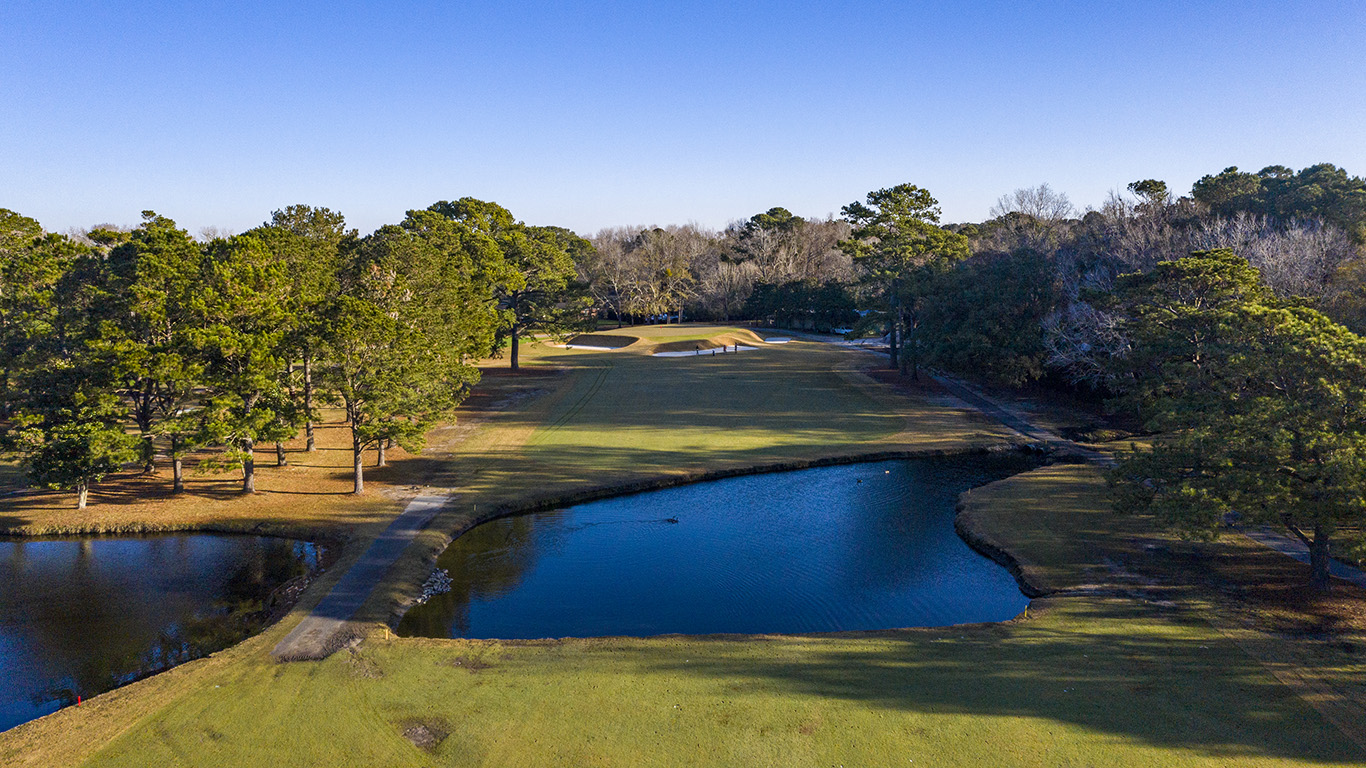
The 7th hole at Charleston Municipal. Photo: Andy Johnson
-
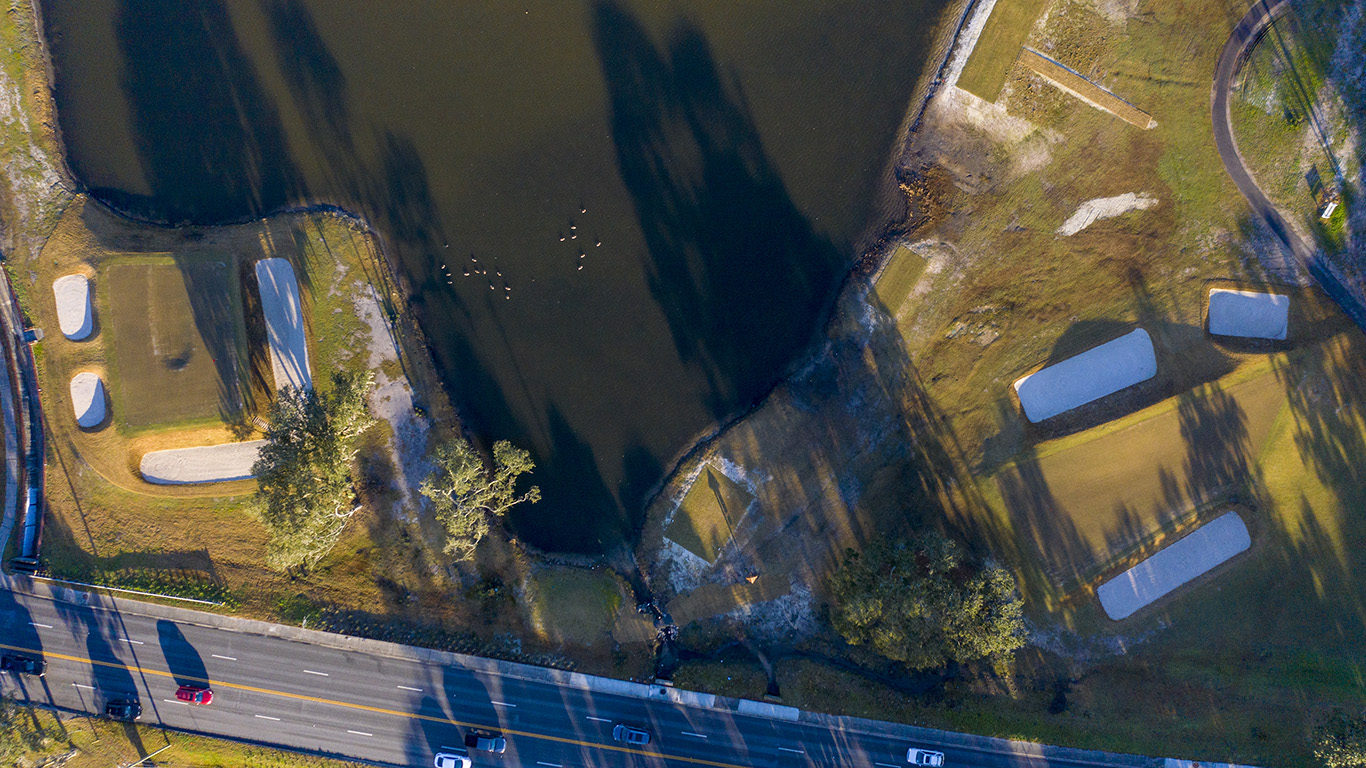
The 14th (left) and 11th (right) holes at Charleston Municipal. Photo: Andy Johnson
-
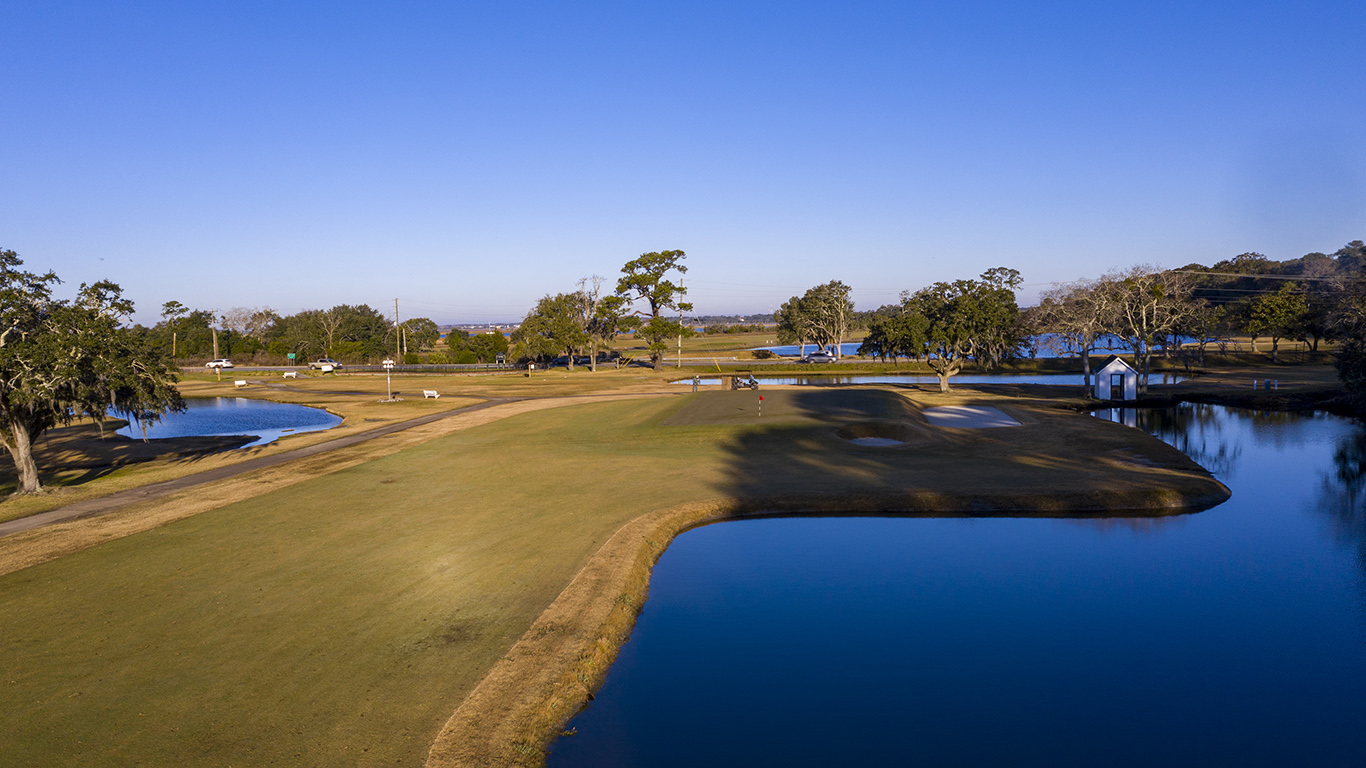
The 16th hole at Charleston Municipal. Photo: Andy Johnson
-
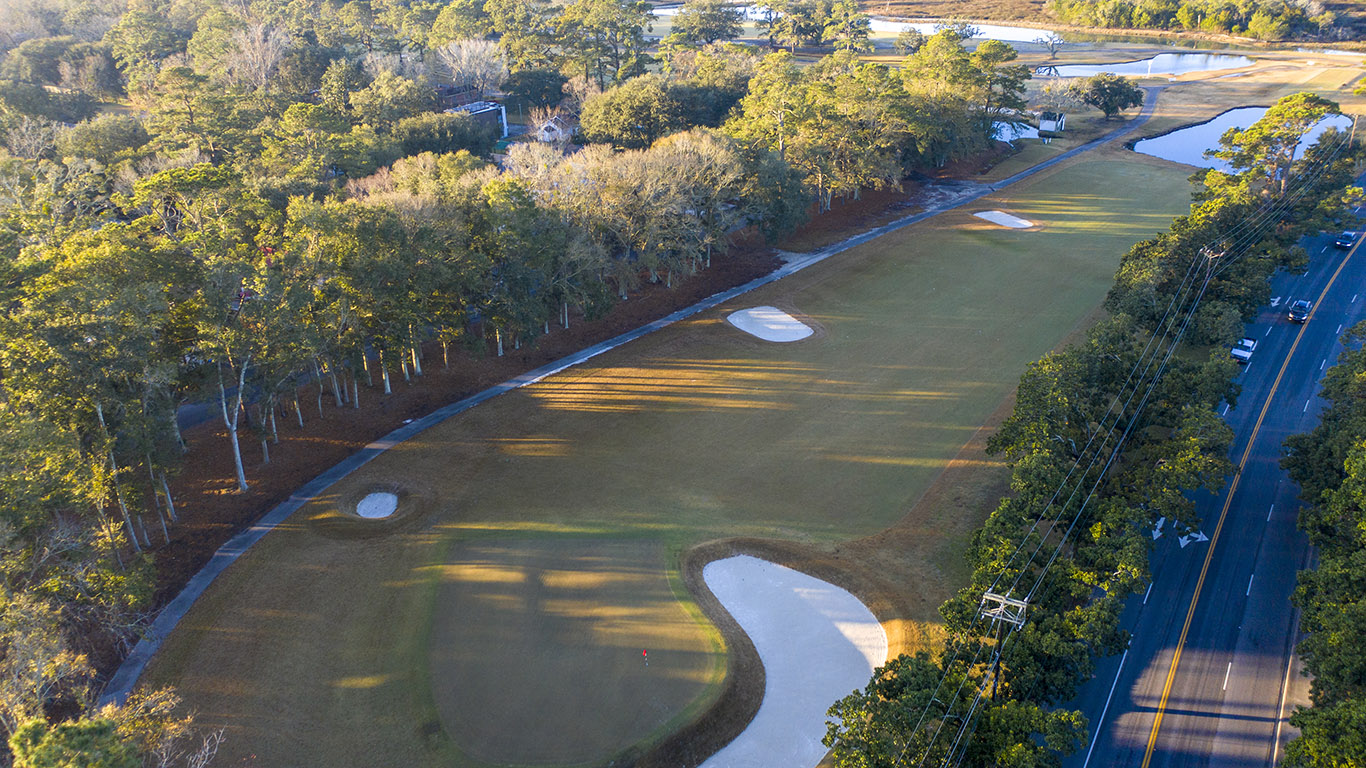
The 17th hole at Charleston Municipal. Photo: Andy Johnson
-
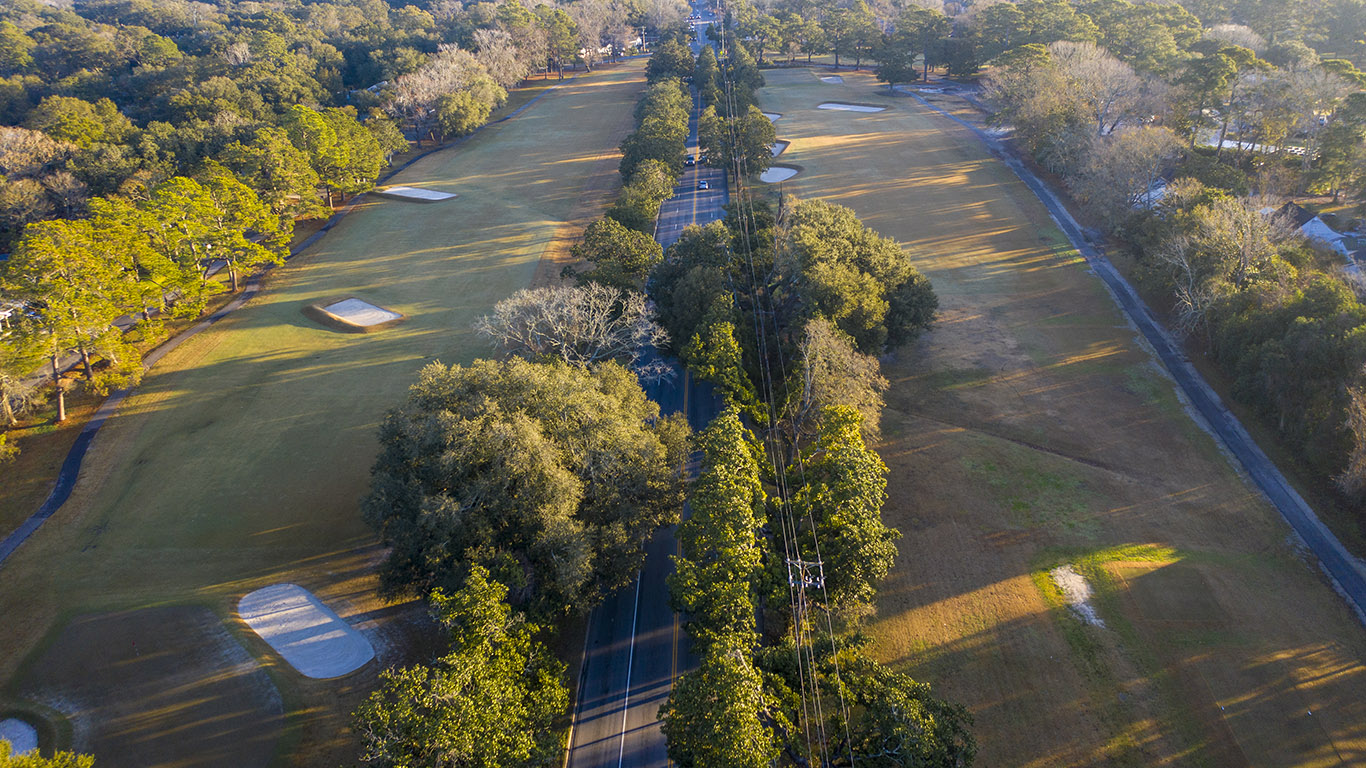
The 10th (left) and 18th (right) holes at Charleston Municipal. Photo: Andy Johnson
Muni was built in 1929 by an obscure architect named John E. Adems, but for Miller, the choice to draw on Raynor for inspiration was obvious. “Being a 1929 golf course,” he explained in an interview with The Fried Egg, “being built at the same time as Yeamans Hall and the Country Club, and being able to see, if you squinted a little bit, some of the classic features of a Raynor design—it really fell to the bottom line of, let’s enhance this and give it an experience that the general public just doesn’t have otherwise.”
Miller’s renovation includes Raynor staples such as the Double Plateau (1), Eden (4), Punchbowl (6), Biarritz (8), Redan (11), Cape (12), Road (13), Short (14) and Maiden (15).
-
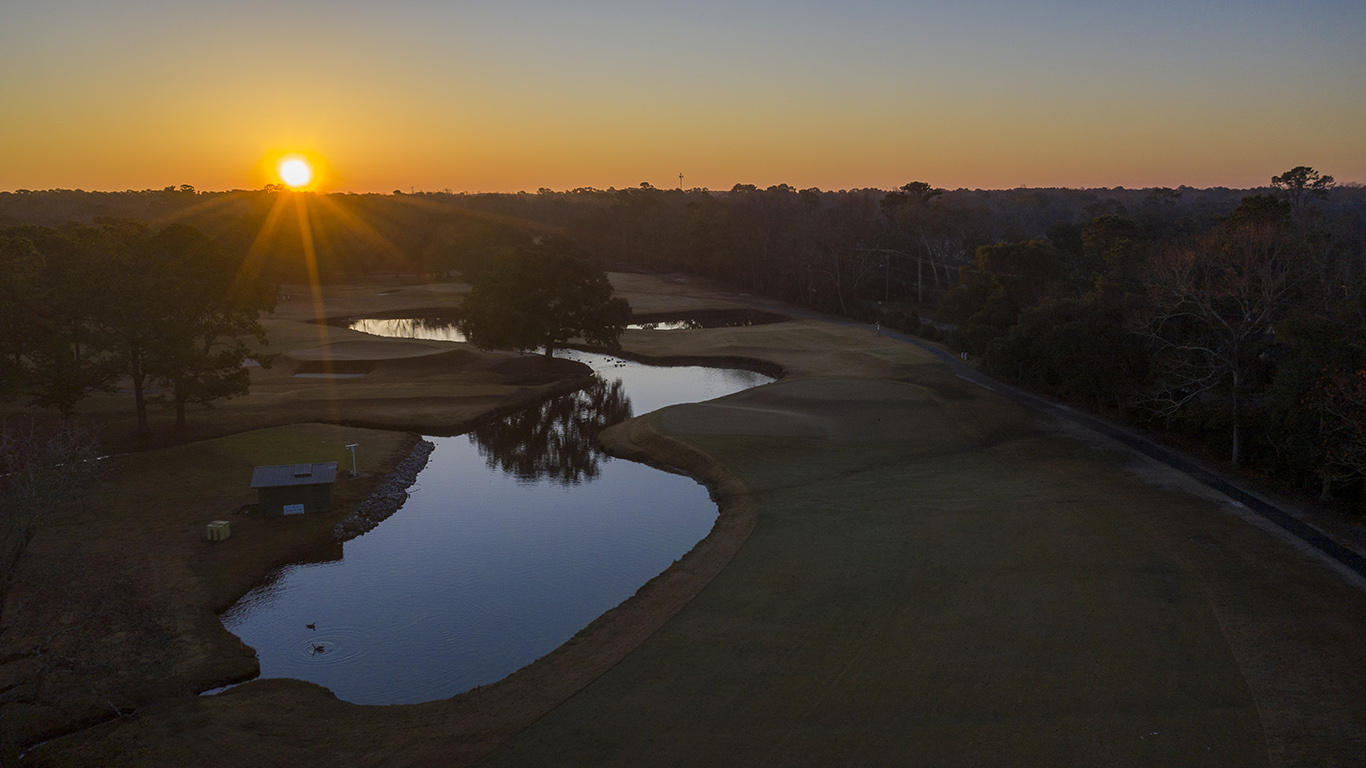
The Double Plateau 1st hole at Charleston Municipal. Photo: Andy Johnson
-
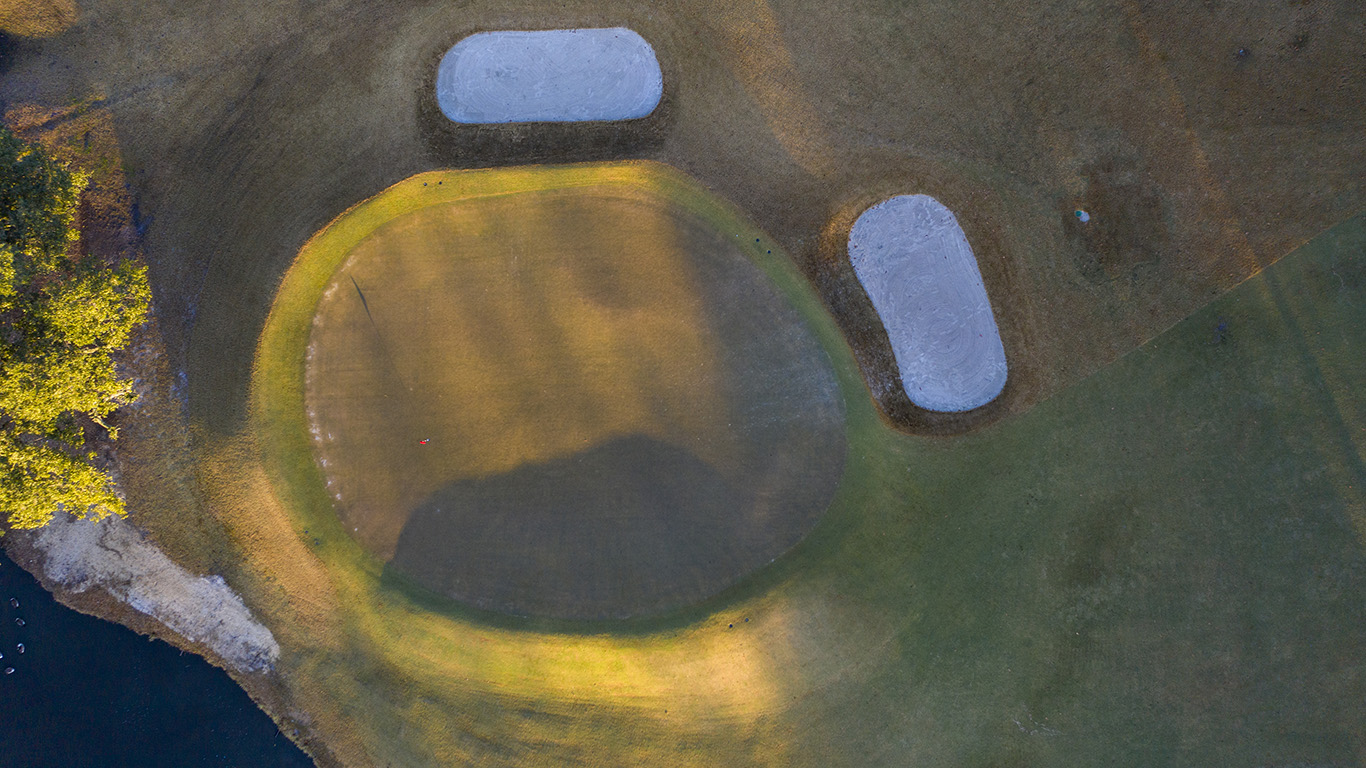
The Punchbowl 6th hole at Charleston Municipal. Photo: Andy Johnson
-
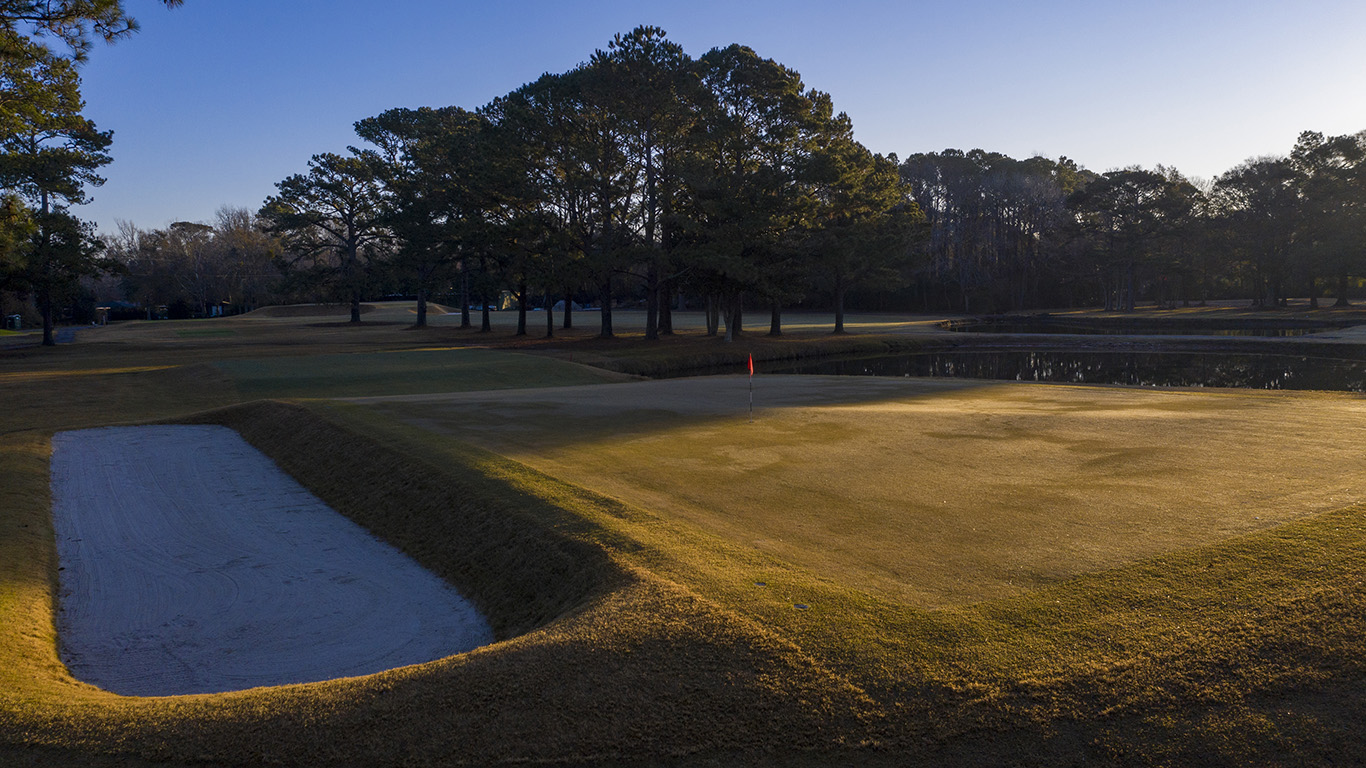
The Biarritz 8th hole at Charleston Municipal. Photo: Andy Johnson
-
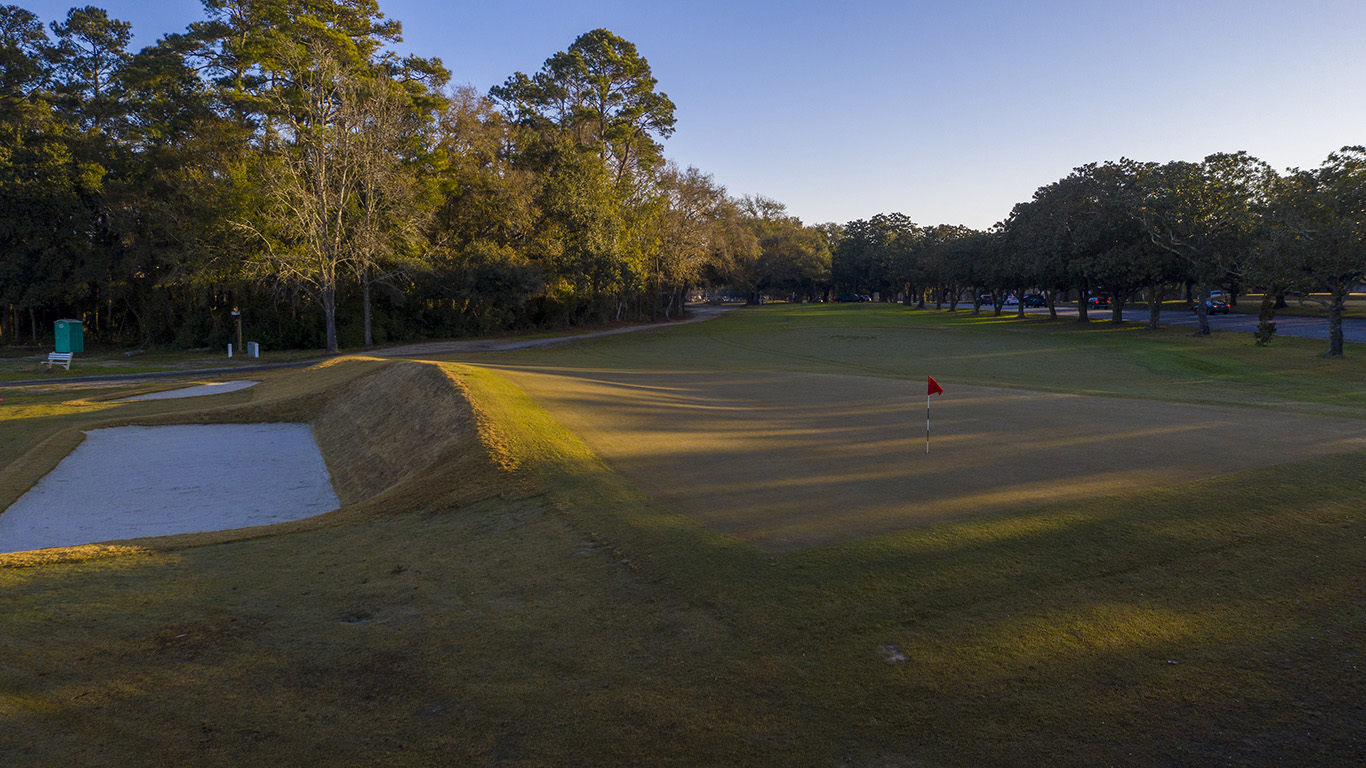
The Redan 11th hole at Charleston Municipal. Photo: Andy Johnson
Perhaps the least sexy but most important component of Miller’s redesign was fixing Muni’s biggest issue: its susceptibility to Charleston’s ever-moving tidal marshes. In my visit to the course before the renovation, I got a first-hand look at how a high tide or a little rain could render the back nine unplayable without a boat.
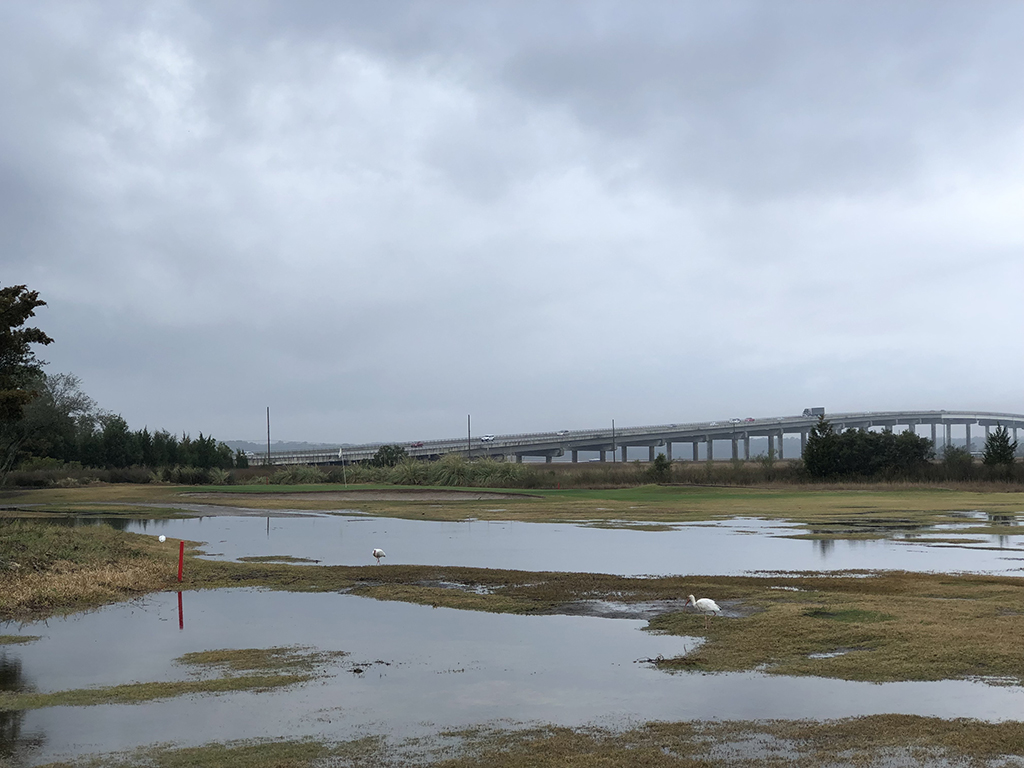
The 13th hole at Charleston Municipal on a wet day prior to Troy Miller's renovation. Photo: Andy Johnson
To address this problem, Miller raised the ground on the marsh-side stretch from No. 12 through No. 16. He also deepened the lake that those holes play around in order to give the high tides somewhere to go.
While problematic from a drainage perspective, these holes on Muni’s back nine are situated on a stunning piece of land along the Stono River. Miller accentuated this natural asset by placing some of Raynor’s most memorable templates there, including the Cape, Road, Short, and Maiden holes.
-
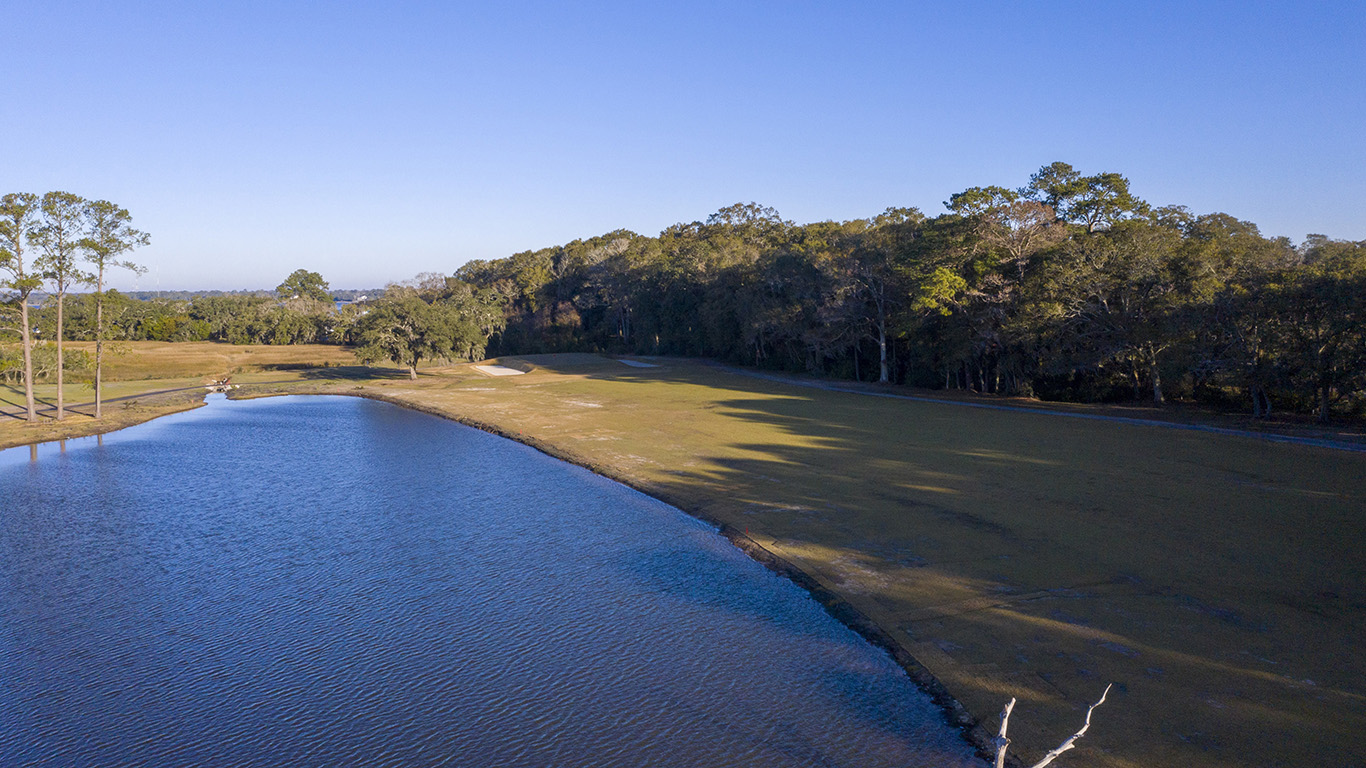
The Cape 12th hole at Charleston Municipal. Photo: Andy Johnson
-
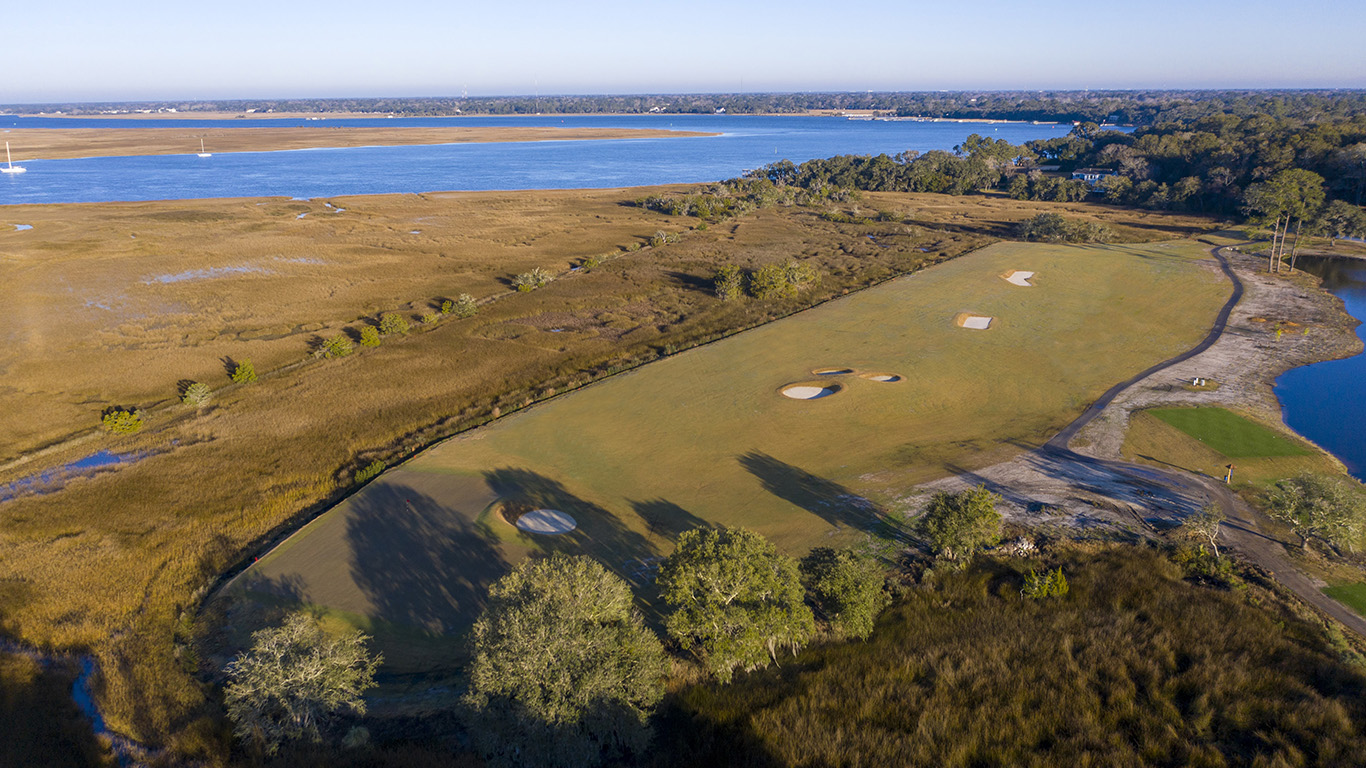
The Road 13th hole at Charleston Municipal. Photo: Andy Johnson
-
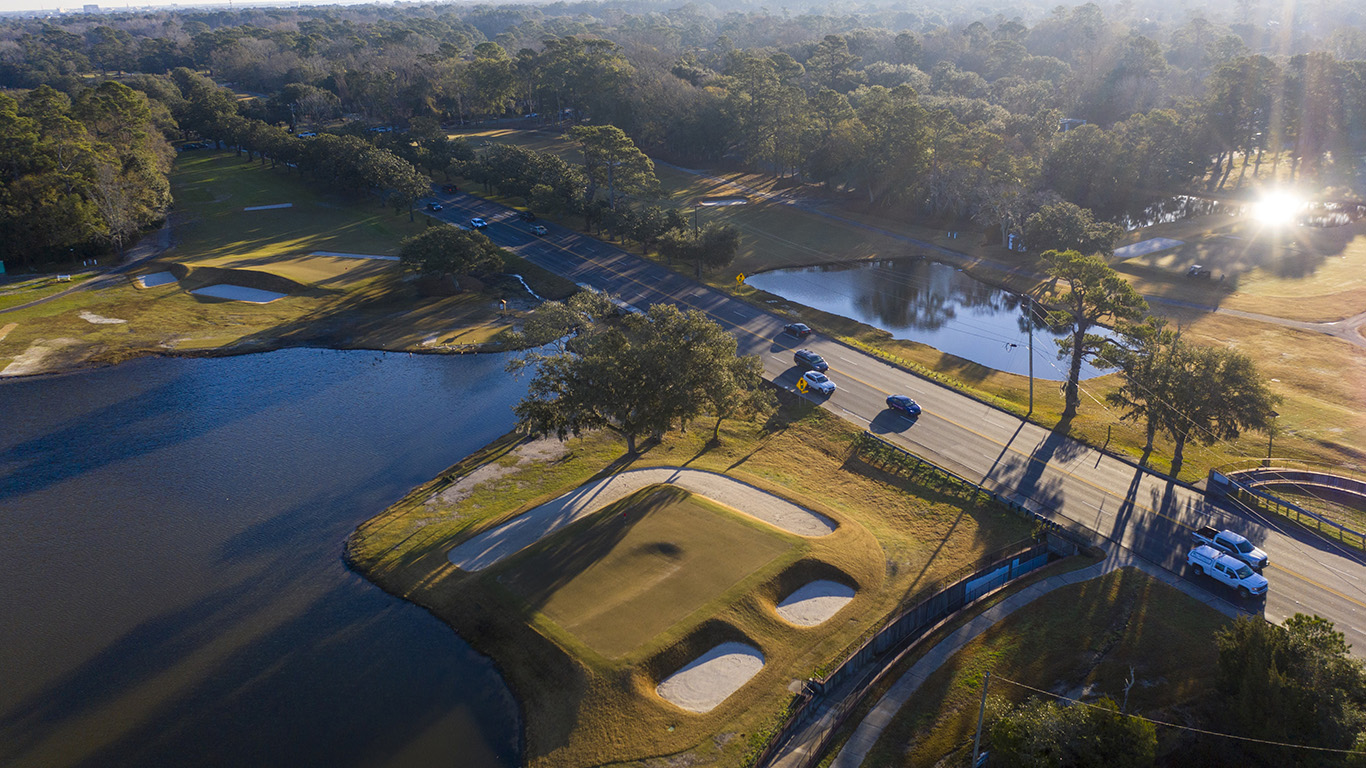
The Short 14th (bottom) and Redan 11th (top) holes at Charleston Municipal. Photo: Andy Johnson
-
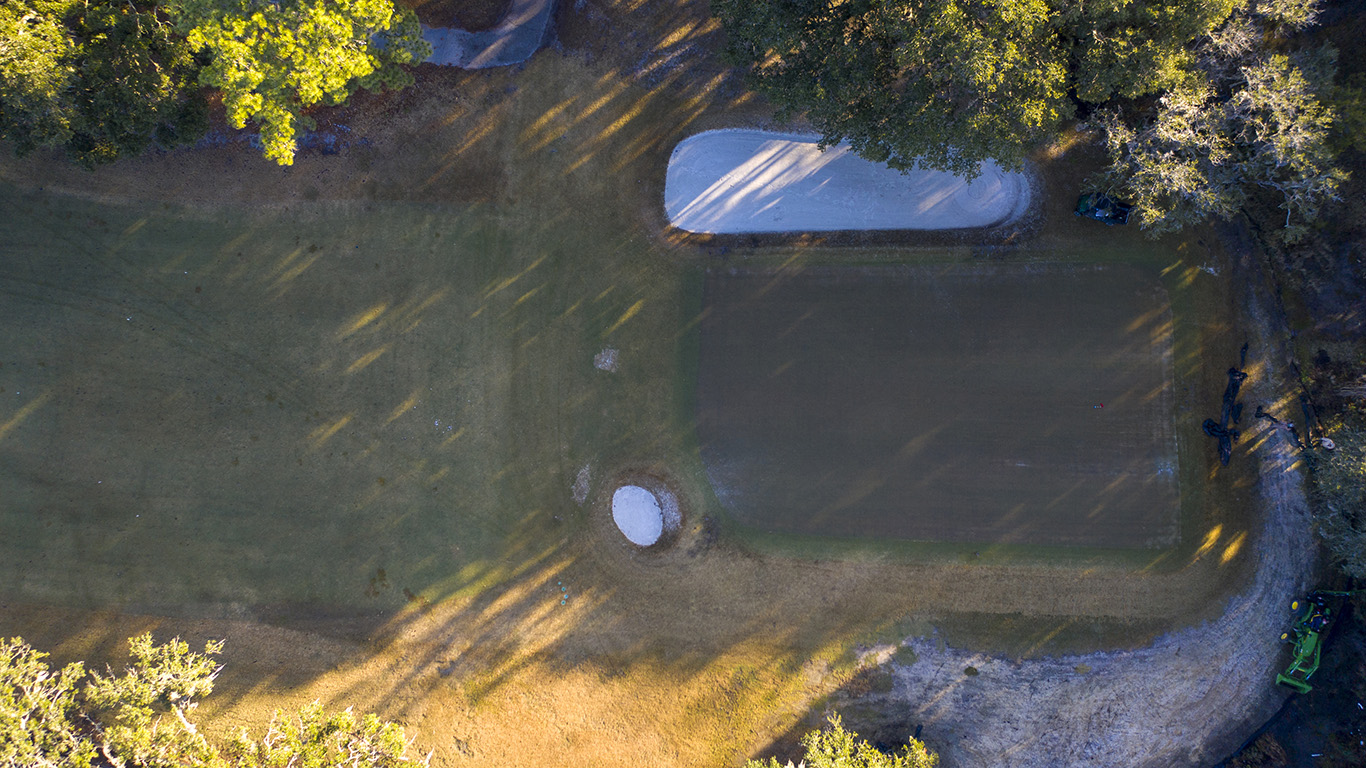
The Maiden 15th hole at Charleston Municipal. Photo: Andy Johnson
The renovation isn’t perfect. Architecture aficionados will likely quibble with the execution of some of the templates, and they won’t be wrong. For example, the greens are significantly smaller than those Raynor typically built but just as heavily contoured. This means that short-game recoveries can be tough even for skilled players. The contouring of greens is always a delicate balance, but Raynor-style boldness tends to work better on Raynor-sized surfaces.
Still, the excellence of the project as a whole far outweighs these minor misses. Today’s Charleston Municipal Golf Course is more fun, functional, and memorable than its predecessor. It’s also still affordable. While Muni has increased out-of-town green fees, it has kept the resident rates low ($25 to walk). Within a few years, the increased revenue from non-local play is expected to pay for Miller’s work. The hope is eventually to convert Muni from a perennial red number on the city’s balance sheet into a profit driver.
Above all, Charleston Municipal makes an emphatic case that municipal golf courses don’t have to be bland. They can take architectural risks, and they should, like the downtown buildings and botanic gardens that tourists love, offer a flavor of local history.


 by
by 
